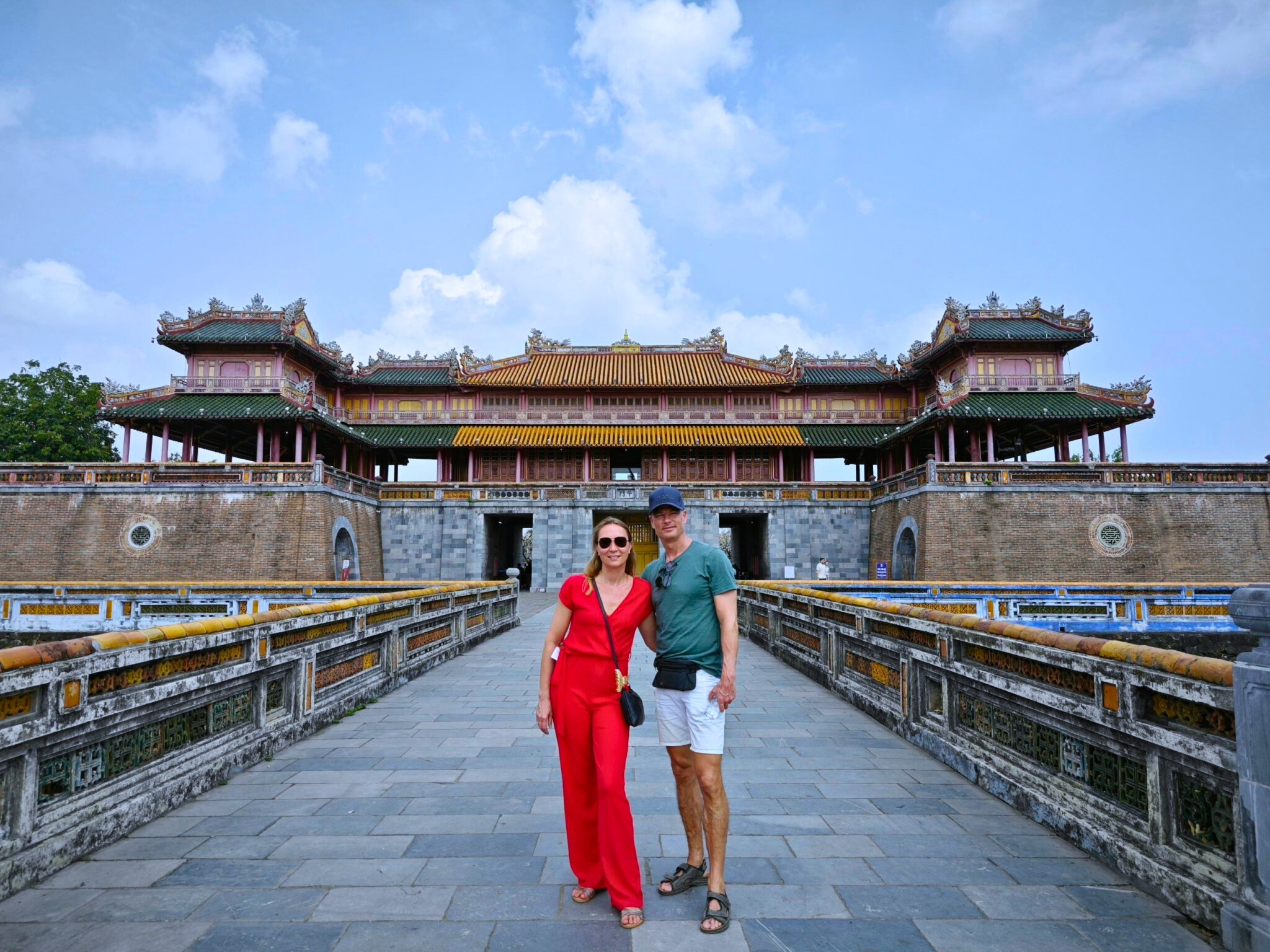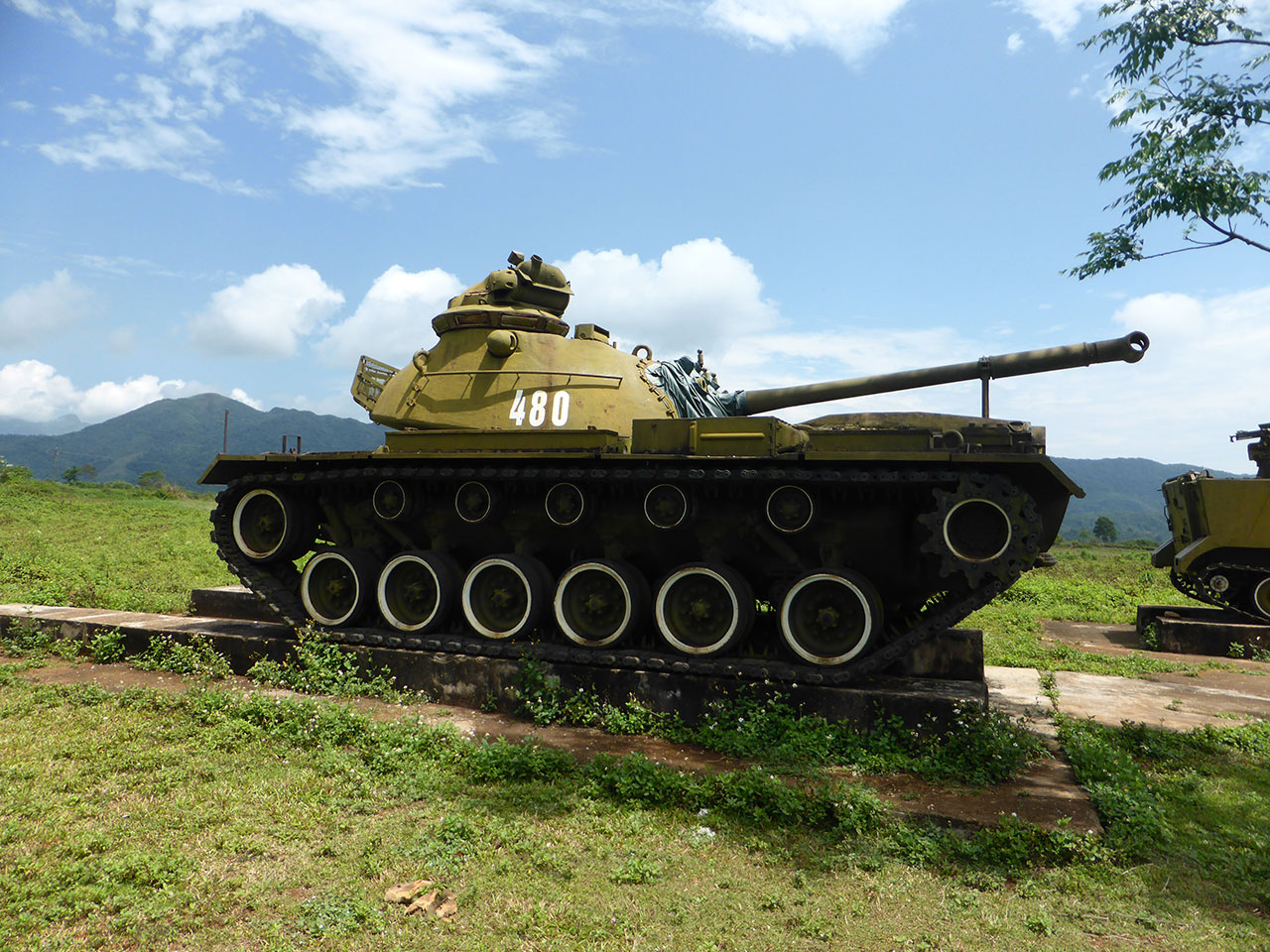Unlike the traditional wooden structures found throughout the Hue Imperial City, Kien Trung Palace represents a bold architectural departure. Built between 1921 and 1923 during the reign of Emperor Khai Dinh, this palace showcases an unprecedented blend of Eastern and Western design elements that makes it truly one-of-a-kind in Vietnamese imperial architecture.

The palace served as the private residence of Emperor Bao Dai, Vietnam’s last monarch, who lived here from 1926 until his abdication in 1945. Today, visiting Kien Trung Palace offers travelers a unique glimpse into the final chapter of Vietnam’s imperial history.
Architecture That Tells a Story
The architectural design of Kien Trung Palace Hue today reflects a fascinating period of cultural transition. The three-story structure features:
- European-style columns and balconies that showcase French colonial influence
- Traditional Vietnamese roof tiles maintaining connection to local heritage
- Art Deco interior elements representing early 20th-century modernism
- Royal yellow walls symbolizing imperial authority
This architectural fusion wasn’t merely aesthetic—it represented Emperor Khai Dinh’s vision of modernizing Vietnam while preserving its cultural identity. The palace’s design philosophy continues to inspire architects studying Vietnamese architectural evolution.
Exploring Kien Trung Palace: A Room-by-Room Journey
The Ground Floor: Public Spaces
Upon entering Kien Trung Palace, visitors first encounter the reception hall, where Emperor Bao Dai once welcomed foreign dignitaries and conducted state affairs. The space features:

The ground floor also houses the former administrative offices, now converted into exhibition spaces displaying photographs and documents from the imperial era. These exhibits help visitors understand the complex political landscape of early 20th-century Vietnam.
The Second Floor: Private Royal Quarters
The second floor reveals the more intimate aspects of royal life. The emperor’s bedroom and study remain furnished with original pieces, offering insights into Bao Dai’s personal tastes and daily routines. Notable features include:
- French-imported furniture mixed with traditional Vietnamese decorative elements
- Personal photographs showing the emperor’s family life
- A collection of Western books alongside classical Chinese texts
- Modern amenities for the era, including electric lighting and indoor plumbing
The Third Floor: Panoramic Views and Entertainment
The top floor served as the emperor’s entertainment space, featuring a ballroom where Western-style parties were held. Today, this floor offers spectacular views of Hue, allowing visitors to appreciate the palace’s strategic location within the imperial complex.
Visiting Kien Trung Palace: Practical Information
| Information | Details |
|---|---|
| Location | Inside Hue Imperial City, Thuan Thanh Ward, Hue |
| Opening Hours | 7:00 AM – 5:30 PM daily |
| Entrance Fee | Included in Hue Imperial City ticket (200,000 VND for adults) |
| Best Time to Visit | Early morning or late afternoon for better lighting and fewer crowds |
| Tour Duration | 45-60 minutes recommended |
How to Make the Most of Your Visit
To truly appreciate Kien Trung Palace Hue today, consider these expert tips:
- Hire a knowledgeable guide who can explain the historical context and architectural details often missed by casual visitors
- Visit during weekdays to avoid weekend crowds and enjoy a more contemplative experience
- Bring a camera with good low-light capabilities, as interior photography is allowed but flash is prohibited
- Combine your visit with other nearby attractions within the Imperial City for a comprehensive historical experience

Historical Significance in Modern Context
Kien Trung Palace represents more than just architectural beauty—it embodies a pivotal moment in Vietnamese history. The palace’s preservation efforts, supported by UNESCO World Heritage designation, ensure future generations can learn from this unique cultural monument. Recent restoration work has carefully maintained the original character while ensuring structural stability.
Comparing Kien Trung Palace with Other Hue Monuments
| Monument | Architectural Style | Historical Period | Unique Features |
|---|---|---|---|
| Kien Trung Palace | French-Vietnamese fusion | 1921-1945 | Western amenities, Art Deco elements |
| Thai Hoa Palace | Traditional Vietnamese | 1805-1945 | Elaborate wood carvings, throne room |
| Truong Sanh Palace | Classical Vietnamese | 19th century | Queen mother’s residence, gardens |
| Dien Tho Palace | Traditional with renovations | 1804-1907 | Longest-serving palace, multiple emperors |
Cultural Activities and Special Events
Throughout the year, Kien Trung Palace Hue today hosts various cultural activities that bring history to life:
- Royal music performances featuring traditional court music recognized by UNESCO as intangible cultural heritage
- Historical reenactments during major festivals like Tet and Hue Festival
- Photography exhibitions showcasing the imperial family’s private collection
- Educational workshops on Vietnamese royal customs and etiquette
Conservation Challenges and Future Plans
Preserving Kien Trung Palace presents unique challenges due to its mixed architectural heritage. Current conservation efforts focus on:
“Maintaining the delicate balance between French colonial and Vietnamese traditional elements requires specialized expertise and careful material selection.” – Hue Heritage Conservation Project
Future plans include enhanced visitor facilities, interactive digital exhibitions, and improved accessibility for international tourists while maintaining the palace’s authentic character.
Tips for Photography Enthusiasts
For those looking to capture the beauty of Kien Trung Palace Hue today, consider these professional photography tips:
- Golden hour photography: The palace’s yellow walls glow beautifully during sunrise and sunset
- Architectural details: Focus on the unique fusion elements like European columns with Vietnamese roof tiles
- Interior shots: Use high ISO settings to capture the ornate furniture without flash
- Perspective play: Utilize the palace’s multiple levels for interesting compositional angles
Nearby Attractions Worth Exploring
After visiting Kien Trung Palace, enhance your Hue experience by exploring these nearby attractions:
- The Forbidden Purple City: Just a 5-minute walk away, offering insights into earlier imperial life
- Nine Dynastic Urns: Magnificent bronze artifacts showcasing Vietnamese craftsmanship
- Royal Theater: Recently restored venue for traditional performances
- Imperial Museum: Comprehensive collection of royal artifacts and costumes
For a complete imperial experience, consider booking a guided tour of Hue’s royal monuments that includes Kien Trung Palace as a highlight.
Kien Trung Palace Hue today stands as more than just a tourist attraction—it’s a living testament to Vietnam’s complex journey modernization, and cultural preservation. Its unique architectural fusion continues to inspire discussions about identity, heritage, and the future of historical conservation.
Whether you’re a history enthusiast, architecture lover, or cultural explorer, Kien Trung Palace offers a uniquely Vietnamese experience that bridges past and present. As you walk through its halls, you’re not just observing history—you’re experiencing the very spaces where Vietnam’s destiny was shaped.
Plan your visit to Kien Trung Palace as part of a comprehensive Hue itinerary, and discover why this remarkable monument continues to captivate visitors from around the world. For more information about touring Hue’s imperial treasures, explore SAMTOUR VIETNAM’s expertly crafted heritage tours.




